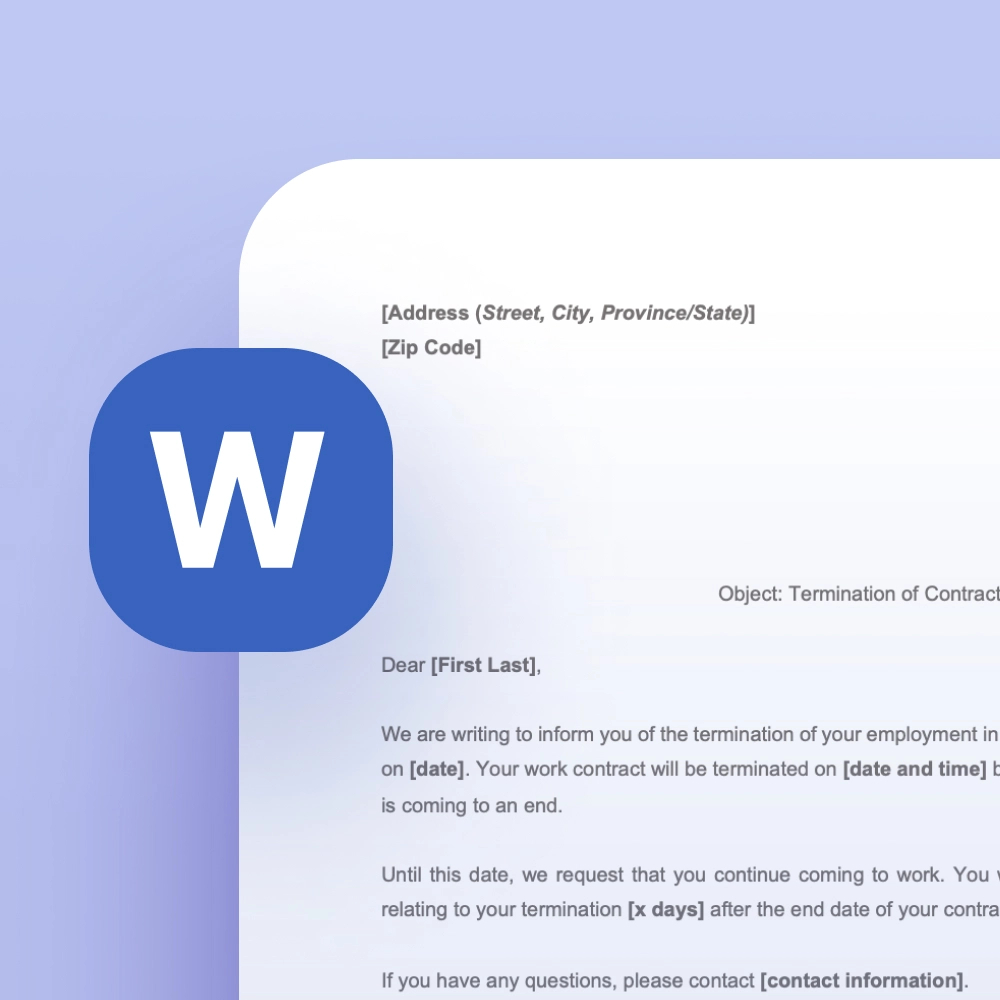A termination letter is a formal notice given by an employer to inform an employee they have been terminated from employment.
How to Write a Termination Letter?
A termination letter should minimally include the following information:
- The employee’s name and work position;
- The reasons for the employee dismissal;
- The actions taken prior to termination such as warnings and disciplinary actions;
- The date of the employee’s last day of work;
- Information about compensation and benefits;
- Contact information for the person in charge.
A termination letter should always be written in a professional manner. Casual or informal language should be avoided. Information must be concise, exempt from unnecessary details, and accurate.
How to Terminate an Employee?
The termination of an employee must be planned according to the legislation in place. In Canada, employers must provide clear reasons for the employee dismissal. To announce a termination, HR professionals or managers should:
- Avoid small talk;
- Communicate the termination at the beginning of the meeting;
- Listen to the employee;
- Avoid misdirected compassion;
- Detail important information such as pay, benefits, references, etc.;
- Thank the employee for their contribution;
- Wrap up the meeting as quickly as is reasonably possible.
What Reasons Can Lead to a Termination?
Legitimate reasons for termination vary by region. In Canada, they include:
- Incompetence: relative lack of productivity or poor quality of work;
- Insubordination: dishonesty or disrespect of company rules;
- Attendance issues: tardiness, frequent absences;
- Criminal behavior: stealing, revealing trade secrets;
- Discriminatory behaviors: intimidation, sexual harassment, racism, etc.;
- Physical or psychological violence.







